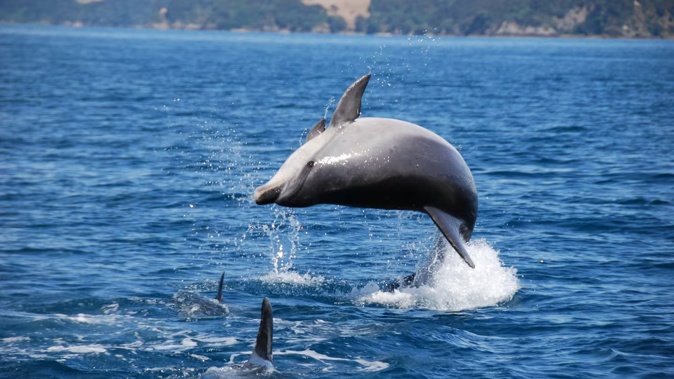
- Rule-breaking boaties are undermining efforts to protect dolphins in the Bay of Islands Marine Mammal Sanctuary.
- A report commissioned by the Department of Conservation (DoC) showed a continuing decline in bottlenose dolphin numbers, with only 40 estimated last autumn.
- DoC is enhancing compliance and community engagement to improve the sanctuary’s effectiveness and protect dolphins.
Rule-breaking boaties are reportedly undermining a sanctuary’s efforts to protect dolphins in Northland’s gem for marine wildlife watching.
The finding was part of a deep dive into the effectiveness of the Bay of Islands’ (Te Pēwhairangi) Marine Mammal Sanctuary.
The findings, released by the Department of Conservation (DoC) earlier this year, showed the number of bottlenose dolphins in the area was continuing to decline.
The sanctuary was established in 2021 in the heart of Northland’s marine wildlife tourism Mecca as a much-needed way to reduce the high levels of interactions marine mammals had with people and boats.
A science report commissioned by DoC and undertaken by Niwa and the Far Out Ocean Research Collective suggested “a trend of significant decline” was continuing in the number of bottlenose dolphins in the Bay of Islands.
The report stated 40 bottlenose dolphins were estimated to be in the area last autumn.
The figure was a stark drop from the 244 dolphins in 1997 but an improvement on the population’s lowest point of 16 dolphins in 2019.
Bottlenose dolphins are an indicator species – their presence provides information about the condition of the marine environment in the Bay of Islands.
DoC said in an internal review into the sanctuary’s effectiveness that not enough time had passed to evaluate any long-term demographic changes sanctuary restrictions may have had on bottlenose dolphins.
However, Niwa’s report suggested the sanctuary’s effectiveness may be hampered by rule-breakers but acknowledged data may be limited because the study was relatively short.
Niwa found non-commercial boaties observed over a 20-day period rarely adhered to the sanctuary’s rules for minimising dolphin interactions.
“Compliance with the sanctuary rules was generally poor, with power-driven vessels rarely adhering to rules minimising dolphin interactions or the safe zones,” the report said.
“However, all vessels were compliant with rules preventing swimming with marine mammals.”
Rules state if a boat is within 300m of a marine mammal inside the sanctuary, people must stay out of the water, the boat must stay put and is only able to move once the mammal is further away.
A 5 knot speed limit applies to all vessels inside two separate areas of the sanctuary.
Currently, a DoC ranger carries out enforcement patrols during the busy season, such as summer, but patrol days and resourcing are limited in the shoulder seasons.
DoC said the report underscored the need for long-term, evidence-based conservation efforts.
The department’s northern North Island regional operations director Sue Reed-Thomas said DoC was determined to address gaps in the current management of the sanctuary.
“Bottlenose dolphins are long-lived animals and population trends take time to shift,” Reed-Thomas said.
“Our focus is on consistent, proactive management, underpinned by science and supported by strong partnerships with hapū [local Māori] and the wider community.”
DoC’s Bay of Islands operations team has started work to enhance compliance and enforcement within the marine mammal sanctuary, continue building on the partnerships with local hapū and expand community engagement and education efforts.
“Together, we can take meaningful steps to ensure these taonga species are protected for generations to come,” Reed-Thomas said.
Take your Radio, Podcasts and Music with you









